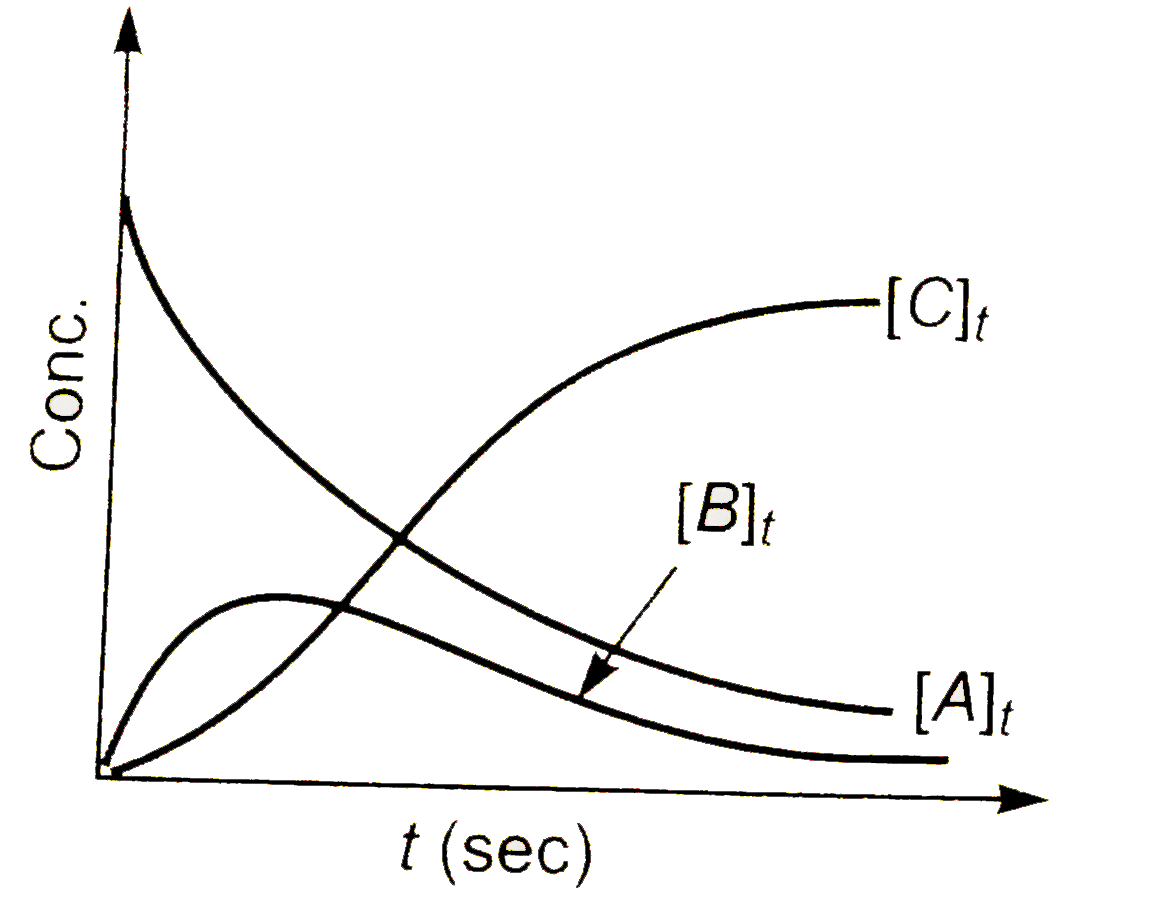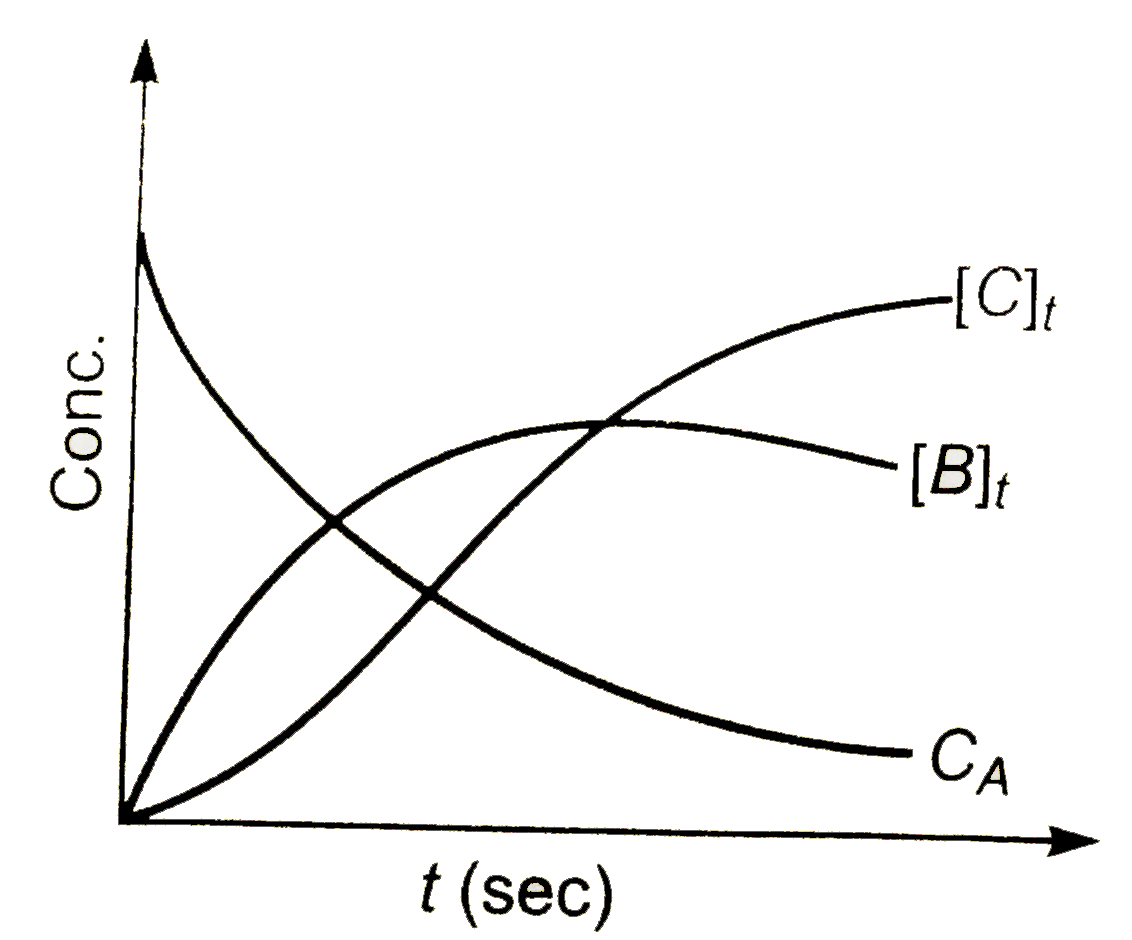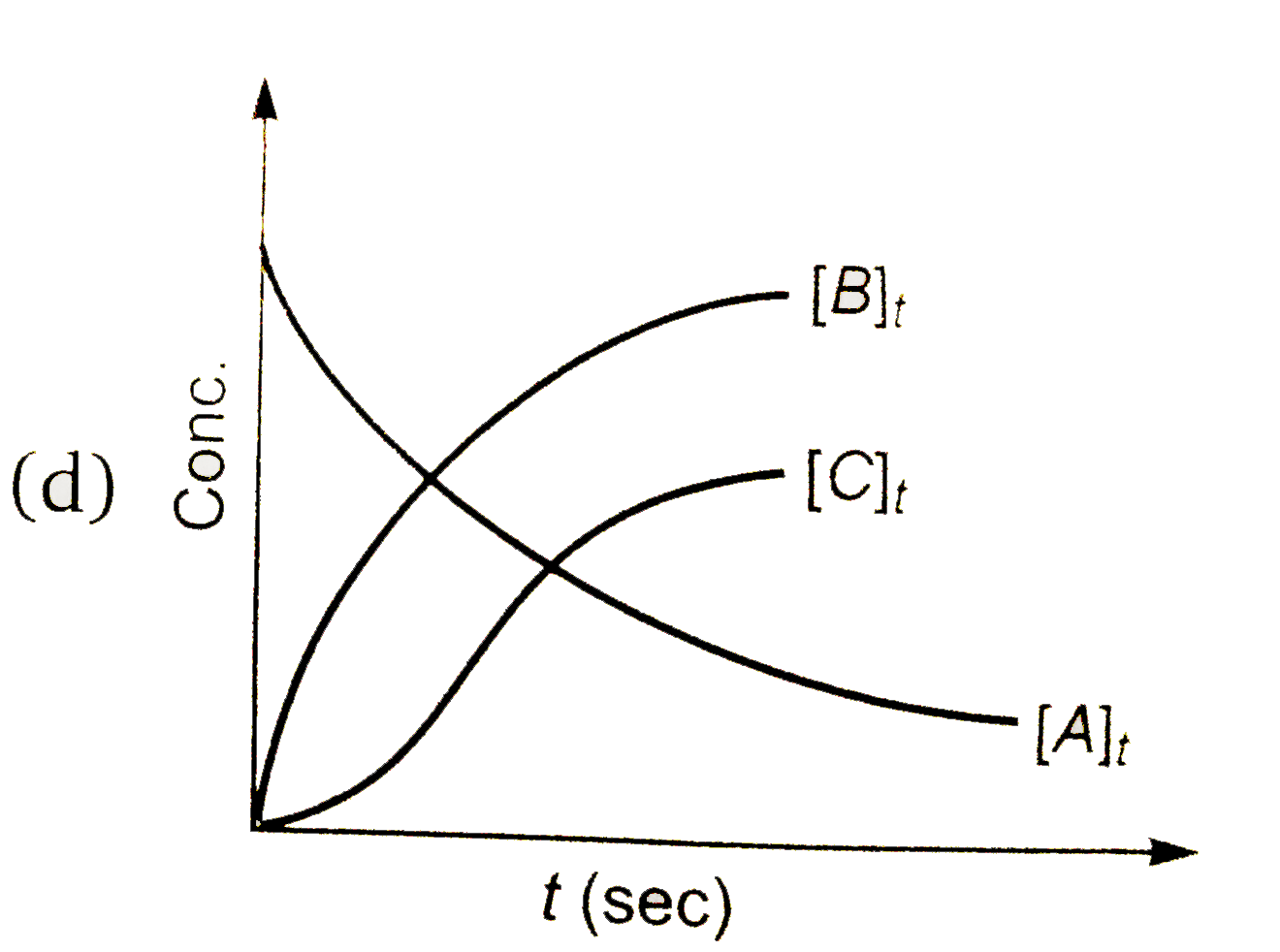Select the correct statement(s):
a) Mass number remains constant when positron emission takes place
b) One neutron converts into proton in β(.0−1e) emission process
c) Activity of a radioactive substance double when temp. increases from 300 K to 310 K
d) Isodiaphers formed when one alpha particle emitted and isotopes formed when 2 beta particles emittedSolution in Punjabi
Mass number remains constant when positron emission takes place
One neutron converts into proton in β(.0−1e) emission process
Activity of a radioactive substance double when temp. increases from 300 K to 310 K
Isodiaphers formed when one alpha particle emitted and isotopes formed when 2 beta particles emitted
The correct Answer is:A, B
Step by step video & image solution for Select the correct statement(s): a) Mass number remains constant when positron emission takes place b) One neutron converts into proton in beta(._(-1)^(0)e) emission process c) Activity of a radioactive substance double when temp. increases from 300 K to 310 K d) Isodiaphers formed when one alpha particle emitted and isotopes formed when 2 beta particles emitted by Chemistry experts to help you in doubts & scoring excellent marks in Class 12 exams.
Updated on:21/07/2023Topper's Solved these Questions
- CHEMICAL KINETIC & NUCLEAR CHEMISTRYBOOK - NARENDRA AWASTHICHAPTER - CHEMICAL KINETIC & NUCLEAR CHEMISTRYEXERCISE - Level 3 - Assertion - Reason Type Questions
3 Videos
- CHEMICAL KINETIC & NUCLEAR CHEMISTRYBOOK - NARENDRA AWASTHICHAPTER - CHEMICAL KINETIC & NUCLEAR CHEMISTRYEXERCISE - Level 3 - Subjective Problems
3 Videos
- CHEMICAL KINETIC & NUCLEAR CHEMISTRYBOOK - NARENDRA AWASTHICHAPTER - CHEMICAL KINETIC & NUCLEAR CHEMISTRYEXERCISE - Level 3 - Passage
1 Videos
- SURFACE CHEMISTRYBOOK - NARENDRA AWASTHICHAPTER - SURFACE CHEMISTRYEXERCISE - Level -2
1 Videos
Similar Questions
Each question contains STATEMENTS-1 (Assertion) and STATEMENT -2 (Reason).
Examine the statements carefully and mark the correct answer according to the instructions given below:
STATEMENTS-1: Acid catalysed hydrolysis of esters is pseudo first order reaction.
STATEMETNT-2:Water is present in excess in given reaction.
a) If both the statements are TRUE and STATEMENT-2 is the correct explanation of STATEMENT-1
b) If both the statement are TRUE but STATEMENT-2 is NOT the correct explanation of STATEMENT-1
c) If STATEMENT-1 is TRUE and STATEMENT-2 is FALSE
d) If STATEMENT-1 is FALSE and STATEMENT-2 is TRUE
View Solution5A→Product
In above reaction, half-life period is directly proportional to initial concentration of reactant. The initial rate of reaction is 400 moll−1−1min Then the order of reaction is
View SolutionTwo consecutive irreversible first order reactions can be represented by
Ak1−−→Bk2−−→C
The rate equation for A is readily interated to obtain
[A]t=[A]0.e−k1t , and [B]t=k1[A]0k2−k1[e−k1(t)−e−k2(t)]
When k1=1s−1 and k2=500s−1 , select most appropriate graph
a) b)
b) 
c) d)
d) 
View Solutionfor the graph below, select correct order of temperture ?

View SolutionWhen a beta^(-) particle is emitted from a nucleus, the neutrons-proton ratio:
View SolutionThe atomic number (A) and mass number (M) of the nuclide formed when three alpha (α) and 2 beta (β) particles are emitted from 23892U is
View SolutionWhen the radioactive iso⊤e88Ra226 decays in a series by emission of three aplha (α) and a beta (β) particle, the isotope X which remains undecay is
View SolutionThe emission of an alpha or a beta particle by a radioactive element forms a new element. However, successive emission of some alpha or beta - particles may give rise to an isotope or an isobar of the original element. In many cases, positron emission or K - electron capture takes place, leading again to the formuation of new elements, alongwith the emission of neutrinos or antineutrinos. These emission also change the neutron/proton (n//p) ratio so that they give rise to stable isotopes which lie in the stability belt. However, in any disintegration reaction, the law of conservation of atomic number and mass number is always obeyed and this helps us to calculate the number of alpha and beta- particles emitted in the reaction. A radioactive element X emits 3 alpha, 1 beta and 1 gamma- particles and forms ._(76)Y^(235) . Element X is
View SolutionThe emission of an αoraβ particle by a radioactive element forms a new element. However, successive emission of some αorβ- particles may give rise to an isotope or an isobar of the original element. In many cases, positron emission or K− electron capture takes place, leading again to the formuation of new elements, alongwith the emission of neutrinos or antineutrinos. These emission also change the neutron/proton (n/p) ratio so that they give rise to stable isotopes which lie in the stability belt. However, in any disintegration reaction, the law of conservation of atomic number and mass number is always obeyed and this helps us to calculate the number of αandβ− particles emitted in the reaction.
Positron emission result in
View SolutionWhen a beta -particle is emitted from a nucleus, the neutron-proton ratio
View SolutionWhen the radioactive isotope ._(88)Ra^(228) decays in series by the emission of 3 alpha and 1 beta particle, the isotope finally formed is
View Solutionएक रेडियोसक्रिय पदार्थ से α अथवा β कणों के उत्सर्जन से एक नऐ तत्व का निर्माण होता है। यद्यपि कुछ αअथवा β कणों के लगातार उत्सर्जन से मूल तत्व के समस्थानिक या समभारिक का निर्माण भी हो सकता है। कई स्थितियों में न्यूट्रीनॉज अथवा एटीन्यूट्रीनॉज के उत्सर्जन के साथ-साथ पॉजीट्रॉन उत्सर्जन या k -इलेक्ट्रॉन का अधिगृहण होता है जिससे पुनः नऐ तत्वों का निर्माण होता हैं। यह उत्सर्जन न्यूट्रॉन/प्रोटॉन (n/p) के अनुपात को भी इस प्रकार परिवर्तित करते हैं कि स्थायी समस्थानिक का निर्माण होता है जो स्थायी क्षेत्र में स्थित होते हैं। यद्यपि किसी विघटन क्रिया में, द्रव्यमान संख्या तथा परमाणु क्रमांक के संरक्षण के सिद्धांत का हमेशा पालन होता है तथा यह क्रिया में उत्सर्जित αएवं β कणों की संख्या की गणना में मदद करती है।
नाभिकीय अभिक्रिया 90Th228→83Bi212 में उत्सर्जित α - तथा β− कणों की संख्या है क्रमशः
View Solutionएक रेडियोसक्रिय पदार्थ से α अथवा β कणों के उत्सर्जन से एक नऐ तत्व का निर्माण होता है। यद्यपि कुछ αअथवा β कणों के लगातार उत्सर्जन से मूल तत्व के समस्थानिक या समभारिक का निर्माण भी हो सकता है। कई स्थितियों में न्यूट्रीनॉज अथवा एटीन्यूट्रीनॉज के उत्सर्जन के साथ-साथ पॉजीट्रॉन उत्सर्जन या k -इलेक्ट्रॉन का अधिगृहण होता है जिससे पुनः नऐ तत्वों का निर्माण होता हैं। यह उत्सर्जन न्यूट्रॉन/प्रोटॉन (n/p) के अनुपात को भी इस प्रकार परिवर्तित करते हैं कि स्थायी समस्थानिक का निर्माण होता है जो स्थायी क्षेत्र में स्थित होते हैं। यद्यपि किसी विघटन क्रिया में, द्रव्यमान संख्या तथा परमाणु क्रमांक के संरक्षण के सिद्धांत का हमेशा पालन होता है तथा यह क्रिया में उत्सर्जित αएवं β कणों की संख्या की गणना में मदद करती है।
पॉजीट्रॉन उत्सर्जन का परिणाम है
View Solutionकथन : .2211Na एक पॉजिट्रान उत्सर्जित करके .2212Mg देता है।
कारण : β+ उत्सर्जन में न्यूट्रॉन प्रोटॉन में परिवर्तित हो जाता है।
View SolutionWhen a β− particle is emitted from a nucleus, the neutrons-proton ratio:
View Solution
